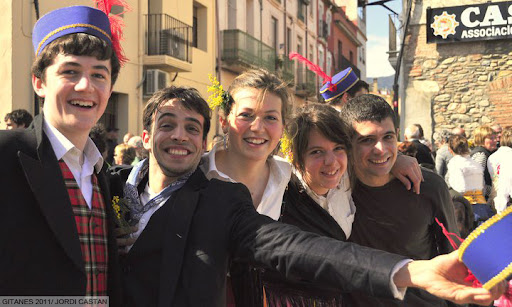It's Yuletide. The humans are feasting, and so are the wild boar, Sus scrofa. Their particular feast is the fallen fruit (in English they are "strawberries", in Catalan "cherries") of Arbutus unedo. This beautiful tree flowers and fruits at the same time, around Yule:
We have passed the Winter Solstice by a week, but the festivals go on. Here in Catalunya my favourite is the one that links me to my Northern roots - the Yule log, known here as Caga Tío. A strong log is placed next to the fire, wrapped in a blanket, fed food scraps each evening (which, of course, it consumes in the night) and cared for. On the evening of 24th December the kids run around the house singing a special song. When they return they hit the log with sticks...and it, er, shits sweeties and wee presents.
Scatological and celebratory all at once, turning the year with food, fertility and warmth.
 |
| Arbutus unedo, the Strawberry Tree |
We have passed the Winter Solstice by a week, but the festivals go on. Here in Catalunya my favourite is the one that links me to my Northern roots - the Yule log, known here as Caga Tío. A strong log is placed next to the fire, wrapped in a blanket, fed food scraps each evening (which, of course, it consumes in the night) and cared for. On the evening of 24th December the kids run around the house singing a special song. When they return they hit the log with sticks...and it, er, shits sweeties and wee presents.
Scatological and celebratory all at once, turning the year with food, fertility and warmth.





























